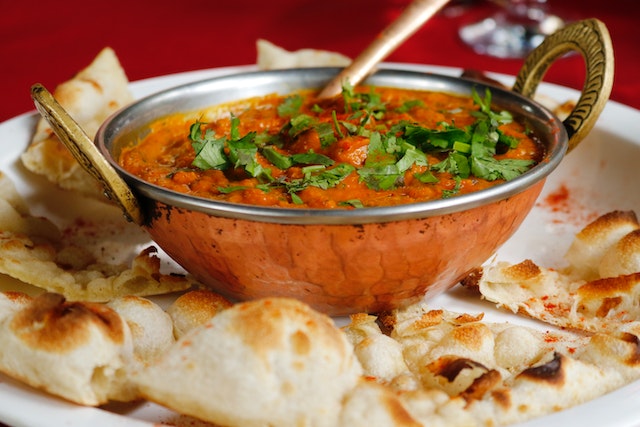
Great food takes a great palette. Prepare your tongue. Learn how flavors work.
A good palette means you can appreciate a wider range of tastes and flavors in your food.
To begin, consider the basic tastes: sweet, salty, sour, bitter, and umami (savory). These tastes are detected by your taste buds, which are located on your tongue.
The Science of Flavor
Flavor is the combination of taste, aroma, and texture that we experience when we eat food. The flavor of a dish is not only determined by the ingredients used to make it but also by the way those ingredients are cooked and prepared.
The components of flavor can be broken down into five basic tastes: sweet, sour, salty, bitter, and umami. These tastes are detected by the taste buds on our tongues. Taste buds are made up of specialized cells that send signals to the brain in response to specific tastes.
Aroma also plays a crucial role in flavor. The olfactory receptors in our noses are responsible for detecting aromas, which combine with taste to form the overall flavor experience. The brain then integrates these signals to create a sense of flavor.
Texture is another important component of flavor. The way food feels in our mouths – whether it’s crunchy, creamy, or chewy – can affect how we perceive its flavor.
Flavors are created by a complex interplay of chemical compounds. When we eat food, the compounds in that food interact with the receptors on our tongue and in our nose to create a sense of flavor. These compounds can also interact with each other, either enhancing or masking certain flavors.
Understanding Flavor Profiles
If you want to take your food to the next level, understanding flavor profiles is essential. A flavor profile is a combination of tastes, aromas, and textures that work together to create a harmonious flavor experience.

The five basic tastes are sweet, sour, salty, bitter, and umami. Sweetness is often associated with sugar and adds a pleasant, satisfying flavor to many desserts and baked goods. Saltiness enhances the natural flavors of food and can make a dish more savory. Sourness adds tanginess and brightness to dishes, especially in the form of citrus fruits or vinegar. Bitterness can be strong and overpowering, but it can also add depth and complexity to dishes. And umami is the newest taste to be recognized, adding a savory, meaty flavor to many dishes.
Understanding how these tastes work together and exploring different combinations is key to creating interesting and delicious dishes. For example, when cooking with sweet ingredients like honey or fruit, balancing the flavors with a bit of acidity from lemon or vinegar can create a more complex and interesting flavor profile. Adding salty ingredients like soy sauce or miso can bring out the umami flavors in a dish and round out the overall taste.
Exploring Combinations and Balance
When creating a dish, consider how each ingredient contributes to the overall flavor profile. Ingredients with similar flavor profiles can be used in combination to create a more pronounced taste. For example, using garlic, onions, and shallots together can create a savory and complex flavor profile.
On the other hand, balancing out strong flavors with milder ones can also create a delicious dish. For example, pairing bitter greens like arugula with sweet and juicy fruits like strawberries can create a balanced and flavorful salad.
Popular Flavor Profiles in Different Cuisines
Different cuisines have their own unique flavor profiles that make them stand out. For example, Thai cuisine often uses a combination of sweet, sour, and spicy flavors, while Mediterranean cuisine is characterized by the use of herbs and spices like oregano, thyme, and paprika.
Indian cuisine is known for its complex spice blends, combining flavors like cumin, coriander, and turmeric. Mexican cuisine often incorporates smoky flavors from chipotle peppers or charred vegetables like roasted tomatoes.

Developing Complex and Harmonious Flavor Profiles
Developing complex and harmonious flavor profiles takes practice and experimentation. Here are some techniques to keep in mind:
Taste as you go: As you add ingredients to a dish, taste it frequently to see how the flavors are developing.
Balance flavors: Consider the overall taste of the dish and adjust the seasoning as needed to ensure a balanced flavor profile.
Explore new flavors: Don’t be afraid to try new ingredients or flavor combinations to broaden your palate and create unique dishes.
Use fresh ingredients: Fresh ingredients including herbs, spices, and produce can make a big difference in the overall flavor of a dish.
Understanding flavor profiles and experimenting with different ingredients and combinations will help you become a flavor savant and create delicious dishes that tantalize the taste buds.
Flavor Pairing
One of the most important skills in cooking is knowing how to pair flavors in a way that enhances the taste of the dish. This is known as flavor pairing, and it involves understanding the principles of complementary and contrasting flavors, as well as flavor affinities and synergies.
Principles of flavor pairing
Complementary and contrasting flavors: Complementary flavors are those that naturally go well together, such as salt and pepper or sweet and sour. Contrasting flavors, on the other hand, are those that are very different but can work together to create a unique flavor profile.

Flavor affinities and synergies: Flavor affinities are flavor combinations that often work well together, such as tomatoes and basil or chocolate and vanilla. Synergies are flavors that work together to enhance the taste of each other, such as garlic and lemon or ginger and soy sauce.
Common flavor pairings in cooking
There are many common flavor pairings in cooking that you can use as a starting point to develop your own flavor profiles. Some of these include:
- Lemon and garlic
- Tomato and basil
- Chocolate and vanilla
- Orange and cinnamon
- Soy sauce and ginger
- Rosemary and thyme
- Apple and cinnamon
- Honey and mustard
- Sage and brown butter
Understanding flavor pairing is an essential skill for any home chef. By understanding the principles of complementary and contrasting flavors, as well as flavor affinities and synergies, you can develop your own unique taste and create dishes that are both delicious and memorable.
Ingredients and Flavor
The ingredients used in a dish play a crucial role in its overall flavor. Herbs, spices, and aromatics, for instance, can add depth and complexity to a dish. Each of these ingredients has its own unique flavor profile, and understanding how to use them is key to developing your palate. For example, oregano adds a bold flavor to Italian dishes, while coriander is an essential spice in many Indian curries.

Fruits and vegetables also play an important role in flavor. Sweet fruits like apples and mangoes can add a touch of sweetness to a dish, while tart fruits like lemons and limes can add a tangy punch. Vegetables, such as onions and garlic, can add savory flavors to a dish, while adding texture and nutrition.
Proteins, like meats and beans, can also impact the flavor of a dish. The way you cook a protein, whether it be grilling, roasting, or sautéing, can affect its flavor profile.
For example, a slow-cooked beef brisket has a tender texture and rich flavor, while grilled chicken has a smoky, charred flavor.
Exploring the nuances of specific ingredients is important in developing your palate. For instance, not all tomatoes are created equal – a sun-ripened tomato from a farmer’s market has a much more intense and complex flavor than a store-bought tomato. Similarly, wild-caught salmon has a much richer flavor than farm-raised salmon.
Selecting and using ingredients to enhance flavors is also crucial in cooking. For example, using a high-quality olive oil can enhance the flavors of a salad, while a low-quality oil can detract from its overall taste. Similarly, using fresh herbs and spices can add more flavor and aroma to a dish than using pre-packaged ones.
To become a true flavor savant, try experimenting with different ingredients and spices to develop your palate. Taste each element of a dish separately before combining them, and pay attention to how the flavors and textures work together. And most importantly, don’t be afraid to try new things – you never know what delicious flavors you might discover!
